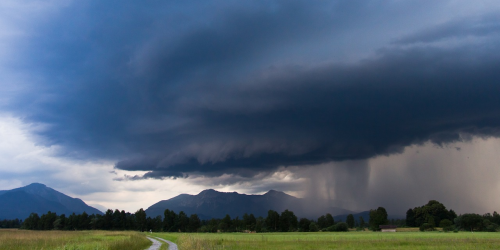In order to inform planning and prevention focused on weather and climate-sensitive health risks to U.S. economic, development, scientific and safety interests at home and abroad, NOA’s International Research and Applications Project (IRAP) selected six new two-year projects following a highly competitive funding competition, totaling $1.5 million. These awards focus on the subseasonal and seasonal timescale, and directly support the work of 33 people (including scientists, staff, postdocs and grad students) and 13 institutions. In addition, these projects advance the work of over 20 collaborating institutions concerned with climate and health at the local, national and international levels.

Climate and weather events such as heavy rains, flooding, heatwaves, droughts and severe storms have substantial implications for human health and well-being around the world. In an increasingly global society, these impacts can have cascading consequences for communities and states within U.S. borders as well as our investments in the private sector, international development, and national safety and well-being. Understanding how climate and weather events abroad affect U.S. interests in the health, international development and national security sectors is a critical step in the use of knowledge, products and early warning, and the development of integrated information systems – including those supported by NOAA and our international partners – to address practical challenges of risk management, economic growth, and bolster the stability and security of the U.S.
In FY 18, IRAP solicited projects that:1) advance knowledge of sub-seasonal to seasonal climate impacts on the health, economy and well-being of transboundary regions in the U.S., and stimulate the development and use of related products and knowledge; 2) identify causal linkages and solutions for reducing risk through the application of climate and weather information; 3) demonstrate the role of innovation in coordinating climate and weather services across transboundary regions (e.g. through contributions to early warning systems or transboundary resource management mechanisms or other agreements); 4) inspire the production of information of near term relevance to planning and preparation designed to anticipate, mitigate and prevent health threats such as diseases outbreaks, mortality and morbidity, worker safety and productivity, and migration; and 5) identify, elucidate and test the institutional partnerships and pathways to effective use of predictive information to reduce health risks and enhance resilience at multiple time scales. All projects were encouraged to work with researchers and stakeholders in the public health community, including the Centers for Disease Control’s BRACE Program.
The 6 new projects funded by IRAP in FY 18 are the following:
- The development of climate-informed decision-support tools for the prevention and control of Aedes-borne diseases in the US and transboundary regions
- Lead PI: Ángel G. Muñoz, International Research Institute for Climate and Society (IRI) The Earth Institute at Columbia
- Co-PIs: Dr. Madeleine Thomson, IRI/Columbia University; Patrick Kinney(Boston University); Laura Harrington (Cornell University)
- Climate, health, and migration in the Pacific Islands
- Lead PI: Laura Brewington (East-West Center)
- Co-PIs: Victoria Keener (East-West Center and Matthew Widlanksy (University of Hawaiʻi)
- Use of seasonal climate forecasts to generate a Mosquito-borne disease Forecasting System in Central America and the Caribbean
- Lead PI: Cory Morin (University of Washington)
- Co-PIs: Samuel Sellers (University of Washington) and Kristie Ebi (University of Washington)
- Safeguarding the health and well-being of communities vulnerable to extreme heat in the Southwestern U.S. and Northwestern Mexico transboundary region
- Lead PI: Tamara Wall (Desert Research Institute)
- Co-PIs: Kristin VanderMolen, Benjamin J. Hatchett, and Dr. Erick Bandala (Desert Research Institute)
- Integrating Seasonal and Subseasonal climate information into public health contexts: co-producing decision support applications in Puerto Rico and Dominica
- Lead PI: Zack Guido (The University of Arizona)
- Co-PIs: Benét Duncan (University of Colorado); Jennifer Henderson (University of Colorado); Maureen Lichtveld (Tulane University School of Public Health and Tropical Medicine); Simon Mason (IRI/Columbia University)
- Using global seasonal forecasts to map Chikungunya risk
- Lead PI: Assaf Anyamba (Universities Space Research Association)
- Co-PI: Wassila Thiaw (NOAA)





